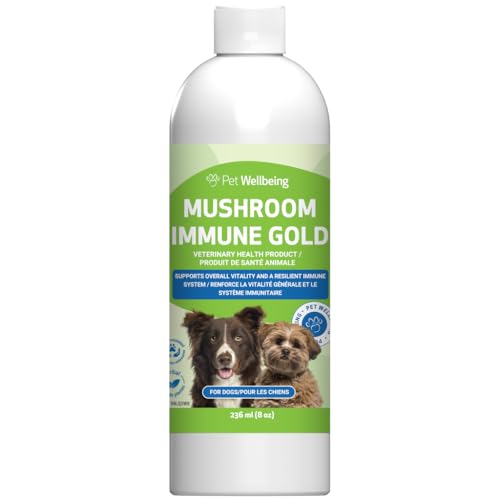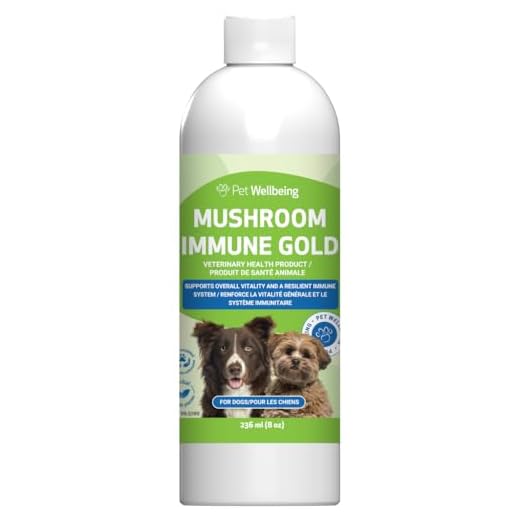




When faced with the diagnosis of a tumour in a canine companion, many owners find themselves questioning the expected duration of their pet’s life. Generally, the prognosis hinges on several factors, including the tumour’s type, location, and stage. While some aggressive forms could lead to a lifespan of just a few months, other less aggressive varieties may allow for several years of quality life.
On average, animals diagnosed with cancer may have a survival time ranging from several months to a few years. For instance, a benign growth might offer a prognosis of several years, while more serious conditions, such as lymphosarcoma, often lead to a more rapid decline. Treatment options, such as surgery, chemotherapy, or palliative care, play a significant role in extending life expectancy and improving the quality of life.
Regular veterinary check-ups and early detection are fundamental in managing cancer in pets. Owners should monitor any unusual behaviour or symptoms, as these may indicate the presence of a serious health issue. Consulting with a veterinary oncologist can provide tailored treatment plans that may significantly increase the chances of a longer, healthier life for your furry friend.
Survival Outlook for a Canine Facing a Cancerous Growth
For a canine diagnosed with a cancerous growth, prognosis varies significantly based on multiple factors. Typically, the average survival time ranges from a few months to several years. Factors influencing this include the type and stage of cancer, treatment options, and the dog’s overall health.
Some types of cancer are more aggressive than others. For instance, lymphomas often have a better response to chemotherapy, potentially extending lifespan to 12 months or longer with treatment. Conversely, aggressive forms like osteosarcoma may lead to a more limited prognosis, often requiring amputation followed by chemotherapy, which can provide an additional 6 to 12 months.
Factors Influencing Prognosis
Age plays a significant role; younger canines generally have a better chance of fighting the disease. Early detection is crucial. Regular veterinary check-ups can lead to early diagnosis, allowing for more effective intervention. The location of the growth also matters; accessible tumours may be surgically removed, improving outcomes.
Management and Care
Supportive care is essential in these cases. Maintaining a nutritious diet, ensuring comfort, and managing pain are vital. Palliative care can also enhance quality of life, allowing a beloved companion to remain comfortable for as long as possible. Consulting with a veterinary oncologist can provide tailored treatment plans that maximise the potential for a longer, healthier existence.
Understanding Different Types of Malignant Tumours in Dogs
Recognising the specific type of cancer is crucial for determining treatment and prognosis. Sarcomas, for instance, develop in connective tissues. They can manifest as lumps beneath the skin or within organs. Common examples include osteosarcoma, found in bones, and soft tissue sarcomas, which can arise anywhere in the body.
Carcinomas originate from epithelial cells and are often found in organs like the lungs, liver, and skin. Mammary tumours are a frequent concern in females, particularly if they haven’t been spayed. Early detection can significantly improve outcomes, so regular veterinary check-ups are advisable.
Lymphomas affect the lymphatic system, leading to swollen lymph nodes and other systemic symptoms. This type of cancer can be aggressive, but there are treatment options available that can extend quality of life.
Hemangiosarcoma is another aggressive form typically found in the spleen or heart. Symptoms may not appear until the disease is advanced, making routine screening important for early intervention.
Understanding these types helps in recognising signs and seeking timely veterinary care. Staying informed about potential symptoms aids in proactive health management, ensuring your furry companion receives the best possible attention.
Key Factors Influencing Lifespan with a Malignant Tumour
Age plays a significant role in determining survival time. Younger canines often exhibit a better chance of recovery due to their robust immune systems, while older companions may struggle more against aggressive growths.
Type and Location of Neoplasm
The specific type and location of the abnormal growth are critical. Some forms, like mast cell tumours, may respond well to treatment, while others, such as osteosarcoma, can be more challenging. Tumours in easily accessible areas might be surgically removed, enhancing prognosis.
Treatment Options
Available treatment methods greatly affect outcome. Surgical excision, chemotherapy, and radiation therapy can extend life. However, the combination and timing of these therapies must be tailored to the individual. Regular veterinary check-ups ensure treatments remain effective and any complications are managed swiftly.
| Factor | Influence on Lifespan |
|---|---|
| Age | Younger canines generally fare better |
| Type of Neoplasm | Responsive types can improve prognosis |
| Location | Easily accessible tumours may be removable |
| Treatment Options | Effective therapies can prolong time |
| Overall Health | Pre-existing conditions may complicate treatment |
Nutrition and emotional support also contribute. A balanced diet and a stress-free environment can enhance quality of life, making each moment more enjoyable. Regular engagement with loved ones and maintaining routines can help keep spirits high.
Signs and Symptoms to Monitor in Dogs with Malignant Tumours
Monitor your pet for unusual behaviours such as lethargy, lack of appetite, or sudden weight loss. These are often key indicators of distress and should prompt immediate veterinary attention.
Observe for any lumps or masses that appear suddenly or change in size. Regular physical examinations can help you catch these changes early. If you notice swelling in specific areas, it may signal a more serious issue.
Keep an eye on your furry friend’s breathing patterns. Laboured or rapid breathing can indicate complications. Additionally, watch for coughing or gagging, as these symptoms might suggest that the cancer is affecting respiratory functions.
If your pet shows signs of pain, such as difficulty moving, whimpering, or reluctance to engage in regular activities, consult your veterinarian. Pain management is crucial for their quality of life.
Gastrointestinal changes, such as vomiting or diarrhoea, may also arise. These symptoms can stem from the tumour or be a side effect of treatment. Maintain a record of any changes in digestion and report them to your vet promptly.
Increased thirst or urination can also occur. If you notice your pet drinking more water than usual or frequent bathroom trips, this should raise a flag. These changes might be related to treatment or the tumour itself.
Finally, emotional behaviour can shift. If your once active companion becomes withdrawn or shows signs of depression, it’s essential to address these changes. Providing comfort and seeking veterinary advice can help manage their emotional state.
For specific dietary needs, consider exploring options like the best dog food for brussels griffon to support your pet’s health during this challenging time.
Impact of Early Detection on Lifespan and Treatment Options
Early identification of growths plays a pivotal role in extending the duration and improving the quality of life for pets facing serious health challenges. Regular veterinary check-ups and owner vigilance can lead to timely diagnosis, allowing for more effective intervention.
When I noticed a lump on my furry friend, I immediately scheduled a vet appointment. The swift action led to a diagnosis of a treatable condition rather than a more severe one. This experience underscored how vital it is to monitor changes in behaviour and physical appearance. The sooner abnormalities are addressed, the higher the chances of successful treatment.
Various therapeutic approaches, including surgery, chemotherapy, and radiation, depend heavily on the stage at which the health issue is detected. For instance, surgical removal of a growth in its early stages often results in a favourable prognosis. In contrast, delays in seeking help can limit options and worsen outcomes.
Studies indicate that early intervention can lead to a significant increase in survival rates. For some types of growths, detecting them in their initial phases can mean the difference between a few months and several years of life. Ensuring regular health screenings and being observant of any unusual signs can pave the way for better treatment outcomes.
It’s not just about medical intervention; the emotional aspect of early detection plays a huge role too. Knowing that you’ve acted promptly can relieve stress for both the pet and the owner, allowing for a more positive approach to the situation. Engaging in conversations with veterinarians about any concerns can also clarify the best steps to take.
In conclusion, prioritising early detection significantly influences treatment options and overall prognosis. Taking proactive measures and being attentive to changes can lead to more hopeful outcomes, making a substantial difference in the lives of our beloved companions.
Nutritional Support for Dogs Diagnosed with Malignant Tumours
Providing optimal nutrition is essential for pets facing health challenges. Tailoring a diet to support those diagnosed with cancer is crucial for maintaining their strength and overall well-being.
- High-Quality Proteins: Include lean meats like chicken, turkey, and fish. These proteins support muscle mass and help the immune system function effectively.
- Healthy Fats: Omega-3 fatty acids from fish oil or flaxseed oil can reduce inflammation. Adding these to meals can provide energy and promote a healthy coat.
- Complex Carbohydrates: Sweet potatoes, brown rice, and oats are excellent choices. They provide sustained energy and fibre, which aids digestion.
- Fruits and Vegetables: Incorporate antioxidant-rich options like blueberries, spinach, and carrots. These can help combat oxidative stress and support overall health.
Monitor your pet’s weight and appetite closely. Adjust portion sizes based on their needs, ensuring they receive enough calories without overfeeding. Regular meals, rather than one or two large ones, can help maintain energy levels.
- Hydration: Always provide fresh water. Dehydration can be a concern, especially if the appetite declines. Consider offering wet food to increase fluid intake.
- Supplements: Consult with a veterinarian about adding specific supplements. Probiotics can support gut health, while multivitamins may help fill nutritional gaps.
Consider a consultation with a veterinary nutritionist. They can help create a tailored meal plan that meets your pet’s unique needs. Remember, each case is different; what works for one may not suit another.
Lastly, observe any changes in energy levels or behaviour. Adjusting their diet may be necessary based on their response to treatments. Regular vet check-ups will ensure that your furry friend remains as healthy as possible during this challenging time.
Supportive Care and Quality of Life Considerations
Prioritising comfort is paramount for any companion facing serious health challenges. Here are steps to enhance well-being during this time:
- Pain management: Consult your vet about appropriate pain relief options. Regular assessments ensure that discomfort is addressed promptly.
- Environment: Create a calm, familiar space. Soft bedding and easy access to food and water contribute to a soothing atmosphere.
- Mobility support: If movement becomes difficult, consider ramps or harnesses to assist in getting around. This helps maintain independence for as long as possible.
- Hydration and nutrition: Ensure access to fresh water. Tailor meals to include palatable and nutrient-rich options that cater to specific needs. A vet can provide guidance on dietary adjustments.
- Regular vet visits: Frequent check-ups allow for monitoring changes in health status and adjusting care plans accordingly.
Observing behaviour is crucial. Signs of stress or discomfort may indicate the need for changes in care strategies. Activities like gentle walks or play can boost mood, provided they align with physical capabilities.
Consider enriching daily routines with activities that spark joy. Simple interactions, such as gentle grooming or quiet time together, can significantly uplift spirits.
Involve your furry friend in decisions regarding their care. If they show preference for certain activities or settings, accommodating these desires can enhance their quality of life.
Ultimately, the goal is to provide a compassionate and supportive environment that respects their needs and preferences. This approach not only helps in managing health but also fosters a loving bond during challenging times.









